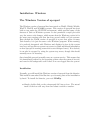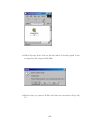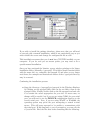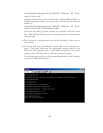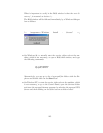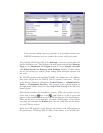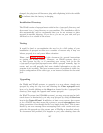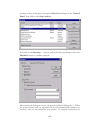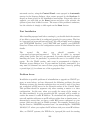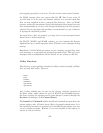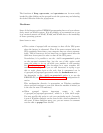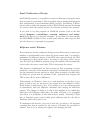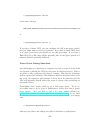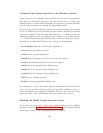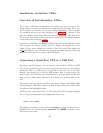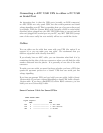automatic service, using the Control Panel: reset apcupsd to Automatic
startup in the Startup dialogue, then restart apcupsd in the Services di-
alogue as shown above in the installation instructions. Frequently after an
upgrade, you will click on the Start button and after a few seconds, the
system reports that it failed to start. The cause of this problem is unknown,
but the solution is simply to click again on the Start button.
Post Installation
After installing apcupsd and before running it, you should check the contents
of two files to ensure that it is configured properly for your system. The first
is c:\apcupsd\etc\apcupsd\apcupsd.conf. You will probably need to change
your UPSCABLE directive, your UPSTYPE and possibly your DEVICE
directives. Please refer to the configuration section of this manual for more
details.
The second file that you should examine is
c:\apcupsd\etc\apcupsd\apccontrol. This file is called by apcupsd
when events (power loss, etc) are generated. It permits the user to program
handling the event. In particular, it permits the user to be notified of the
events. For the Win32 version, each event is programmed to display a
Windows popup dialogue box. If your machine is mostly unattended, you
may want to comment out some of these popup dialogue boxes by putting
a pound sign (#) in column one of the appropriate line.
Problem Areas
In addition to possible problems of reinstallation or upgrade on WinNT sys-
tems, as noted above, we have discovered the following problem: On some
Windows systems, the domain resolution does not seem to work if you have
not configured a DNS server in the Network section of the Control Panel.
This problem should be apparent only when running a master or a slave
configuration. In this case, when you specify the name of the master or
the slave machine(s) in your apcupsd.conf file, apcupsd will be unable to
resolve the name to a valid IP address. To circumvent this problem, simply
enter all machine addresses as an IP address rather than a domain name, or
alternatively, ensure that you have a valid DNS server configured on your
system (often not the case on Win32 systems). For example, instead of us-
ing the directive “MASTER my.master.com” use something like “MASTER
192.168.1.54” where you replace the IP address with your actual IP address.
Also, on WinNT systems, the PIF files in /apcupsd/bin used for starting
129



